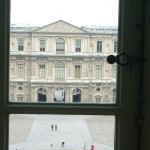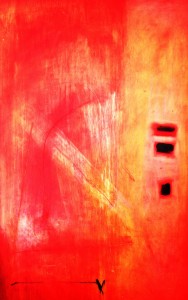Today, if you ask me who I am, or what I do, I will tell you easily and naturally, “I am an artist.” It wasn’t always easy. It took years of doubt to get to this point, but I figured out how to maintain my belief in myself as an artist, in the face of all obstacles.
I would like to share with you a fantastic piece of inspiring writing I found many years ago, unfortunately I cannot remember who wrote it ,but ,would like to thank the author many times over for their words of wisdom.
Over the years the creative steps below have helped me when I had doubts about my career as an artist. When I allowed others to take away my creative time. When I questioned if my work was good enough.
I always take something from it that inspires me, to keep going, to keep creating and just do it, because I have too.
I hope it will inspire you too and make your journey a little easier…
10-Point Plan for Nurturing Your Creative Spirit:
Since your belief in yourself as an artist hinges on your ability to create, you must put your creative time and resources ahead of all other obligations in your life. If being an artist is central to who you are, you must put that first. Everything else will follow.
1.) Tell people you are an artist. Say “I am an artist” to your family, friends, mate, boss, or therapist… Not “I’m artistic,” or “I’m trying to be an artist,” or I’m an account executive but I like to paint.” To be able to say it with confidence you have to start by saying it at all. Try, “I’m an artist, and I’m currently supporting my artistic career with work in another field.” This tells people what you think is important about yourself. Not your day job, because one year you’ll be saying “I am a salesperson,” the next year “I’m a legal secretary.” Then who are you? How will other people believe in your artist self enough to support your endeavors?
If you want to make being an artist possible, make the commitment, take a leap of faith. If you cannot tell people that you are an artist, it will be impossible to do the other things you need to do to make it come true.
2.) Make art your first job. If you are very lucky, you might get a paying job in a related field — fabric design, teaching art, illustration. But if you have a job you barely tolerate because you need the money, you must set aside a large chunk of time in which to be creative or you’ll go crazy. Cut back on your hours or work part-time! Making art is your first job. It’s a real job, no matter how little money you make doing it. (The Tax office is happy to confirm this!) Other work, even if it pays more, has to come second in your heart. Keep reminding yourself and others that you have another, more important job to go to: creating art.
[I work in brief, very productive spells between long dry spells. Since I can’t schedule the creative urge, I’ve arranged my job to allow flexible creative time, whether I get the urge or not. A dependable part-time job and paycheck have meant security. When I free-lanced as a graphic artist I found myself spending my ‘free’ time worrying about the next job. I also learned to refuse extra work. Being firm about my commitment to my career as an artist convinced my employers that it was a conviction worth respecting, even if they didn’t understand it.]
If you can, put in a couple of hours a month with an arts organization or gallery. This is real work, if unpaid, that can get you art-world connections and credentials.
3.) Put your studio first in your living arrangements. If you need to create where you live, because you work at odd hours or can’t afford a separate studio, then arrange your home around your studio. If your living room is the biggest room with the best light, make that room your studio, and don’t worry about guests. Which is more important to you, making art or entertaining? (If you need to, you can always make your studio comfortable enough for visitors or family.) If you need a separate studio, but can’t afford one, move! Find or share a cheaper apartment or share a studio.
4.) Put your creativity first in your relationships. If you’re not able to create, you’ll feel frustrated, resentful, unhappy, and will be no good to anyone. If your friends or family want to know why you need time in your studio instead of socializing or supporting them, explain to them clearly (not defensively) that you are an artist, that you take your work seriously, that it takes a lot of time, and that being creative is important to your happiness and your future. They will begin to respect your commitment. (If you need to be more specific, you can say that you are working on a show, because you are always working on a show.)
If your domestic partner or children are not actively involved in your work, you must separate your creative time and resources from them, by schedule or location, or you will be constantly trying to choose between them…an impossible task.
Sometimes crises in your relationships are more important than whatever you are doing in your studio. But if you constantly use up creative time and energy putting out emotional fires there will be nothing left to give to yourself or your work. You have to draw a line somewhere.
[At one point in a difficult relationship I realized that I was spending my time waiting around for the other person and was too anxious to create. When I realized how many months I had been away from my work, I was distressed. I was sacrificing who I was for the relationship. I told my partner that I needed time and energy to be creative, and that I should not be forced to choose between my work and our relationship. When this was clear to me, it was clear to my partner, who became more supportive.]
5.) Make art part of your social life. Making art can get lonely. Attend art events, meet and talk to other artists, join arts organizations, and create a sense of community for yourself in which art is important. When you are creating, you spend a lot of time by yourself and you can lose your perspective. If you spend time with other people to whom making art is a worthwhile enterprise, you will feel strengthened and encouraged, and it will validate what you do when you’re alone. You will also make the connections you need to survive, and you will get information about shows, grants, supplies, and a whole range of opportunities that you might not otherwise hear about.
6.) Sell your work. If you want to reach the point where all you do is make art, selling your work will be very important. Because if you don’t sell your work ,you will end up doing some other job to make money (unless you are independently wealthy). You will use up your creative time and energy in a job that does not engage your heart, though it might exercise your intellect.
Never give your work away without thinking about it very carefully. Your work is your life blood. It is the fruit of years of training and effort, and is the foundation of your portfolio. When you give away a work of art, you lessen the value of the rest of your work, partly because you appear to value it so little. However, a donation to a cause that is important to you can create good publicity about your work.
Be careful about accepting commissions. Make sure that you will be paid enough to compensate for compromising or redirecting your creativity. Don’t take a commission unless you are very comfortable with the medium and clear about the concept involved, or you will probably regret it.
To support yourself through art alone, you must accept that part of your precious creative time and energy will be spent on marketing your work :
- 1.) improving your presentation (framing, portfolio, slides),
- 2.) publicity (invitations, mailing list, artist statement & resume),
- 3.) showing (contacting galleries, competitions, holding your own open studios), and
- 4.) getting funding (grants, loans, residencies, or, yes, a part-time job.) If you need instruction or support in these areas, take a class or join an organization .
7.) Be true to your art/heart. You must not allow the intention to sell your work change your style or subject matter. For one thing, all the joy will go out of it. For another, your style, your ideas are what make your work unique! If your work is currently unfashionable, you may have to work harder and longer to show or sell, but eventually you will find the right audience for your vision. People will not buy your work on the basis of whether it is fashionable, or a good investment. They will buy it because they respond to it, for reasons of their own. The clearer you are about what you are trying to convey, and the more faithful you are in translating your vision into your medium, the stronger will be the response from your audience.
Don’t dismiss any of your creative ideas, no matter how trivial. Curiosity is your best friend. Most of the things that interest us deeply are things we were curious about as small children. (Einstein’s interest in invisible forces began with a compass he got when he was seven.) Hold on to all your ideas. Carry a small sketchbook or notebook whenever you can. Often your subconscious will prompt you, when playing or doodling, to pursue an idea that will later inspire you to serious work.
8.) Take classes and workshops. You may temporarily lose your inspiration or become discouraged about your current direction. You may find it difficult to schedule creative time, or you may have absolutely no self-discipline and succumb to every distraction that comes along. Sometimes it’s hard to keep up connections to the art community. In all these cases, a regular class will get your motor going again. You will always be working on something, even if it’s only an exercise in color, or studies in a new medium. Artists, like dancers, never stop taking classes, never stop learning.
9.) Don’t worry. Be happy. You do not need to be unhappy, an alcoholic or crazy to see visions and make beautiful things. In fact, the true symptoms of creative thinking are joy, curiosity, clarity, and a single-minded, almost obsessive concentration.
Don’t harp on mistakes or losses; they’re part of your training and may inspire new work. Take joy in your ability to solve these problems and to make use of interesting accidents. Your interest in problem-solving may have gotten you into art in the first place.
Take dry spells in your stride or the anxiety will interfere with the creative thinking that your subconscious is always engaged in. Your subconscious is busy day and night, turning over ideas, memories, dreams, and making connections. Let it work, while you do something calming or playful, renew your energy. Remind yourself often of the joy you feel while you are creating, your satisfaction in problem-solving, your delight in making discoveries, your sheer sensual response to shapes and colors.
If you experience a creeping feeling of fraudulence, especially as you get ready for a show or talk about your work, keep in mind that this is a well-known fear among artists, similar to stage-fright. (Women artists seem to suffer more acutely from this feeling.) Just roll with it; it will pass. There is a little critic in the back of your mind that sounds like all the voices of your family and teachers rolled into one. This critic or censor is a part of you that is terribly afraid of failure, and may whisper negative things in your ear to make you stop trying new or risky things, in a misguided effort to protect you. Know it for what it is, and ignore it.
Most important: every morning when you wake up, give yourself a minute with your eyes closed, and say to yourself “I deserve to be happy,” or “I am a wonderful, prolific artist.” If it doesn’t come easily, you need to say it more often. This is not just talk — words have power, and as the days go by, you will discover that they become true.
10.) Return to the source. If you ever lose your way, re-think your priorities. What things are you putting ahead of your artistic self? Is something else using up your creative time and energy? You may need to make some of the changes I’ve suggested above. Go down the list. Or perhaps you simply need to take a break. Even a corn field has to rest between crops, or it becomes drained of all nutrients and is no longer suitable for growing things.
Always remember this, once you are an artist, you are always an artist. Like swimming, you cannot forget how to create. The source of your inspiration may occasionally seem hidden by the brambles of daily life, but it is always there at your center, like a deep pool of clear water, a spring welling up from the depths of your persona, self-renewing, and waiting for you to plunge in.










































